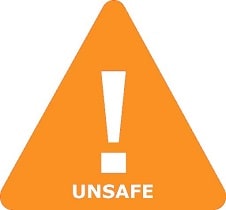Is Formaldehyde, gas Safe in Breastfeeding
Question
I am a breastfeeding mother and i want to know if it is safe to use Formaldehyde, gas? Is Formaldehyde, gas safe for nursing mother and child? Does Formaldehyde, gas extracts into breast milk? Does Formaldehyde, gas has any long term or short term side effects on infants? Can Formaldehyde, gas influence milk supply or can Formaldehyde, gas decrease milk supply in lactating mothers?
Formaldehyde, gas lactation summary

- DrLact safety Score for Formaldehyde, gas is 5 out of 8 which is considered Unsafe as per our analyses.
- A safety Score of 5 indicates that usage of Formaldehyde, gas may cause serious side effects in breastfed baby.
- Our study of different scientific research indicates that Formaldehyde, gas may cause moderate to high side effects or may affect milk supply in lactating mother.
- Our suggestion is to use safer alternate options rather than using Formaldehyde, gas .
- It is recommended to evaluate the advantage of not breastfeeding while using Formaldehyde, gas Vs not using Formaldehyde, gas And continue breastfeeding.
- While using Formaldehyde, gas Its must to monitor child for possible reactions. It is also important to understand that side effects vary largely based on age of breastfed child and time of medication in addition to dosage.
- Score calculated using the DrLact safety Version 1.2 model, this score ranges from 0 to 8 and measures overall safety of drug in lactation. Scores are primarily calculated using publicly available case studies, research papers, other scientific journals and publically available data.
Answer by Dr. Ru: About Formaldehyde, gas usage in lactation
It is a highly volatile gas that is irritating to respiratory, ocular and cutaneous tissues. The olfactory threshold is so low that poisoning can easily be prevented.
Used for many industrial procedures (wood, cosmetics, paint, plastics, resins, chemistry, textiles, photography) and in the preservation of corpses and histological specimens. A largest source of exposure is the combustion process (ATSDR 1999 and 2008)
Formaldehyde, gas is a known carcinogen factor especially on the nasopharyngeal tract (NCI 2011, INSHT 2015, USDHHS 2016).
Although mild hormonal changes have been seen in women exposed to organic solvent mixtures with Formaldehyde, gas (Hassani 2014), few data is available in the scientific literature on the transfer of chemicals to breastmilk from working mothers (Giroux 1992, Fisher 1997).
Despite the growing concern about labor exposure of Formaldehyde, gas in lactating mothers (Grajewski 2016), data sheets consulted on Formaldehyde, gas (LabKem 2013) do not offer any statement on risk or warning advice in connection to breastfeeding (LabKem 2013) (Phrases R 33, R 64, H 362 and P 263). It undergoes a rapid destruction in the plasma and tissues, so it is believed that Formaldehyde, gas whether inhaled or in contact with the skin would highly unlikely any transfer from the mother to the infant through the breastmilk (ATSDR 1999). However it may occur in work places with high levels of exposure such as pathology departments and forensic facilities (CDC-NIOSH 2015, Appendix A 2016).
Because of this, several agencies recommend as a prudent measure for breastfeeding women to be removed from duties that involve high exposure levels of Formaldehyde, gas (Appendix A 2016).
If the company does not agree with the exchange of the working site of a highly exposed lactating mother, they should ensure adequate working conditions of protection (CDC-NIOSH 2015: masks, gloves) and well ventilated facilities that must be able to keep VLA-EC ( TLV-STEL) below 0.3 ppm (0.37 mg / m 3) (USDHHS 2016).
Avoid to breastfeeding if the mother has been massively intoxicated by inhalation or ingestion.
The benefits of breastfeeding outweigh the risk posed by low levels of environmental contaminants contained in human milk, which are often lower than those contained in cow's milk or other foods (WHO).
Alternate Drugs for Contaminant, Environmental Pollutant
Hydroquinone(Low Risk)
Aflatoxin(Low Risk)
Aniline(Unsafe)
Polybrominated(Unsafe)
Bromum(Low Risk)
Cadmium(Low Risk)
Cobalt(Safe)
DDT(Low Risk)
Dieldrin(Low Risk)
Formaldehyde(Unsafe)
Hexachlorobenzene(Unsafe)
White-Spirit(Unsafe)
Mercury(Low Risk)
Nitrate(Low Risk)
Lead(Unsafe)
Tetrachloroethylene(Unsafe)
Chromium Trioxide(Unsafe)
Aminobenzene(Unsafe)
Perchloroethylene(Unsafe)
Phenylamine(Unsafe)
Hydroquinol(Low Risk)
Methanal(Unsafe)
Methylene oxide(Unsafe)
1,4-Benzenediol(Low Risk)
Quinol(Low Risk)
Formalin(Unsafe)
Formol(Unsafe)
